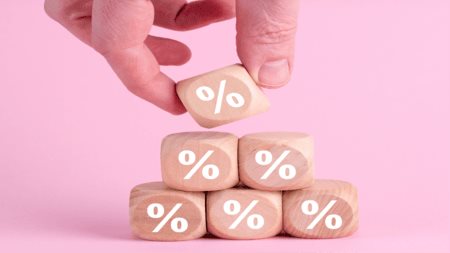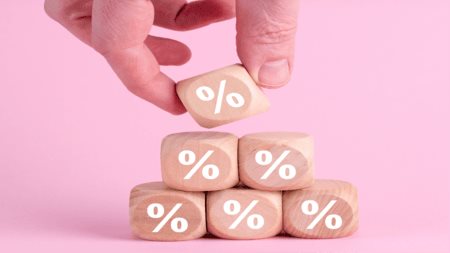The Economic deterioration exposes the fragile financial situation that the household sector constantly finds itself in. The current period of rising interest rates and slowing economy, which brings about the inevitable job loss in certain industries, is far from crisis proportions at this stage, and the likelihood is that, as usual most households will come through it intact. However, this weak economic phase has once again served to highlight the financially fragile financial situation in which the South African household sector (along with certain other western nations it must be added) finds itself. While much is made of high levels of household debt, a key cause of this fragile situation is the ongoing low rate of savings as well as for what household debt is used, i.e. predominantly on consumer goods and non-income generating assets. Almost all indicators related to the well-being of the household sector show deterioration. Households are not only battling due to rising interest rates, it is also a case of surging inflation that is eating into disposable income, driving a steady declining real disposable income growth rate since early-2007. Negative real wage growth is the order of the day. While this year we should see wage inflation playing catch-up, this is only of comfort for those who are employed, and with an economic slowdown increasingly apparent, the start of job losses looks set to be the next negative factor to eat into overall household sector disposable income growth. Households have undoubtedly responded strongly, cutting back on new credit-driven spending sharply, to the detriment of the vehicle and residential property markets. New vehicle sales by June were declining by 22% year-on-year, while new residential mortgage loans have experienced 3 quarters of decline in value, dropping by -26% year-on-year by March. 2008 as a whole is expected to see at least a quarter of the value of the new residential mortgage loan market disappear, and positive year-on-year growth is projected to return only in the second half of 2009 as the expected turn in interest rates arrives. The sentiment crisis seemingly sweeping through minority population groups at present (affecting residential demand as emigration rates rise) is also expected to abate towards 2010. For the time being, however, almost all of the related indicators suggest that the household (and housing) situation gets significantly worse before it gets better. DON’T KEEP UP WITH THE JONESES, THEY’RE INSOLVENT While many are desperately searching for quick fixes to mounting financial pressure, the ultimate solution lies in ending financial self-imprisonment through raising our rate of saving. Often we have heard the statement that a lack of access to credit for a significant portion of our community is a major stumbling block in the struggle of people to lift themselves out of poverty. Such statements are a little simplistic to put it lightly. Quite frankly, even many of us in the middle class may be better off if we didn’t have access to credit, because credit financially uplifts people/households/communities when it is utilised for income-generating investment purposes, not for consumption purposes. But even if South African households were debt free, there would still be no guarantee that they would be financially far stronger than they are today, because savings rates could remain low or non-existent due to high rates of cash-driven consumption expenditure. Savings is a simple concept. It takes place when current expenditure is less than current income. Net savings, which the SARB reports on each quarter, is slightly different from gross savings, and takes place when current income exceeds current expenditure plus depreciation on capital assets owned by households (or consumption of fixed capital as the SARB refers to depreciation). The most recent SARB Quarterly Bulletin shows the sad tale of SA’s net household savings rate (graph above), which is in a state of “dis-saving” and has been since the beginning of 2006. The result of the country’s “non-existent” rate of household saving implies that a large number of middle class households (let’s leave the poor out of it for the time being) are about 1 month away from financial trouble, in the event that they don’t receive their month’s paycheque. Borrowing decisions by households, as well as the corresponding lending decision by banks, very often assume that there will be no major “hiccups” in regular income flows, for example retrenchment. We know that in real life, some people do lose their regular income stream from time to time, especially in the event of an economic or industry downturn, and we also know that such periodic downturns are as certain to occur as the proverbial death and taxes. The introduction of the National Credit Act will not change much either. The Credit Act relates to credit and not to savings, so it is likely that if nothing changes in terms of the way the middle class approaches its finances, the middle class financial situation may remain as fragile as always. Not that we’re in bad company. The USA has a similar “precarious” middle class household financial situation, as has been shown recently. Net dis-saving is estimated by the SARB at -R9.9bn for the first quarter of 2008, or otherwise expressed as -0.7% of disposable income of the household sector. This is the 9th consecutive quarter of estimated household sector dis-saving, and the continuation of a broadly deteriorating savings trend dating back to the early-1990s. We can’t blame tough economic times for this, because this broadly deteriorating savings trend has taken place in a period of broadly improving real economic growth, employment and disposable income growth since the early-1990s, and even through the boom period of 2004-2006 where we had 5%+ economic growth. But instead of treating strong economic periods, with strong income growth, as “windfalls, putting away increasing amounts for those lean years which WILL come, we up the spending as though there is “no tomorrow”. If the current economic downturn is not abnormally bad, and real growth stays in positive territory, bad debts and repossessions by banks need not be out of line with the cycles of the 80s and 90s, and the situation will probably not reach crisis levels which would sink SA banks. The majority of households will probably not lose their houses or cars either. But this is not the point. The real cost to middle class society is in terms of its stress levels, which go “through the roof” in these adverse times, often even impacting on people’s physical health and well-being. Retrenchments in Corporates are greeted with shock, and even the morale of employees not affected deteriorates, as many wonder if they are next. One key reason for high stress levels during these times is that many households are “one missed payday away from financial trouble” due to historically low levels of saving and investment and the western norm of high levels of consumption expenditure. The few individuals who are cash flush, and have enough in reserve to see them through, for example, the next few years without an income from employment would probably take the nasty “shocks” that accompany economic downturns more in their stride, avoiding panic. They would have time on their side, enabling them to take decisions in a calm manner, and to seek the good career opportunities, even possibly taking time to re-train or up-skill themselves in order to improve their marketability and enhance their careers. High rates of saving are one way of creating such “room to manoeuvre” for oneself. This all sounds rather idyllic and indeed there aren’t many such individuals in our middle class society. High rates of saving make financial investment in income generating assets possible, adding to one’s income in future years. In other words, it is a case of short term sacrifice for long term financial gain. Even better, money in liquid assets creates even more employment options, because it can provide the seed capital for one’s own business venture or franchise opportunity. So higher investment is the path to higher output/income growth and a higher degree of financial freedom, and higher savings is one way to achieve higher investment. In the absence of savings, external financing (normally borrowing) is the other path to higher investment. A large portion of SA households save very little. In that low household savings contributes to SA’s overall savings constraint, it contributes to limiting economic growth, job creation, and thus indirectly, too, to the household financial situation. Certainly SA households borrow their fair share (although to put it in perspective it is not obvious that their borrowing is out of line with many other western countries). However, a large percentage of borrowing is either on consumer items such as durable consumer goods or on their primary residence. While one’s primary residence is indeed an asset which generally appreciates in value, it incurs operating and maintenance expenses and it does not generate an income for the household. In his book Rich Dad Poor Dad, Robert Kiyosaki has a wonderful illustration of the middle class “conundrum” which keeps it permanently in the financially fragile position described above. The rich grow their income faster than their expenses, enabling them to grow their income generating assets faster than their liabilities, which in turn contributes to widening the gap between their income and their expenditures a “virtuous cycle”. The financially fragile middle class members very often remain in their precarious position all their lives because their expenses keep pace with their income, their liabilities outstrip their assets, and their biggest asset is the non-income generating primary residence.You may say, so what? We’re in this mess now, and raising savings in times of rising inflation and interest rates is impossible for many. True, in many instances. And so, many of us will be busy with crisis management belt-tightening measures aimed at not losing what we have, while saving is not on the radar. We’re frantically searching for miracle solutions from financial advisors but the reality is that there aren’t many, because the bad financial decisions were made in the boom times and now we’re paying the price. But ultimately the cycle will turn, the economy will strengthen, and that will provide the opportunity for a more “lean and mean” household sector to strengthen its financial position if it keeps the consumption belt tight and uses “windfall” income to raise saving, reduce consumption debt and increase investment in income-generating assets. Will the household sector as a whole take heed and become a far higher savings group? In many cases, probably not. But perhaps there will be some amongst us that will indeed learn the lesson, and change from our usual big spending approach to boom times by keeping the belt tight through those good times. And when the next downturn arrives (and it will), such households will reap the benefits of having looked ahead and preparing for the bad times. So, in summary, for many it is too late to avoid the stress that comes with a slowing economy and rising inflation and interest rates. However, one positive aspect of these adverse times is the “belt tightening” exercise which many of us are forced to go through. Most households should come through the downturn financially intact, and will also be somewhat “leaner and meaner”. This will stand them in good stead to strengthen their balance sheets at the return of better economic times, employment opportunities, salaries and discretionary remuneration in the form of bonuses etc. The opportunity will once again arise to save and invest more, and thus to boost longer term income growth. Crucial, though, is instead of setting one’s current expenditure levels using disposable income levels achieved in the good times as a benchmark, rather use the bad times as a benchmark for setting the spending levels and use the good times to raise saving rather than current expenditure levels. In other words, next time that times are good, don’t try to “keep up with the Joneses, because I heard they were having their cars repossessed recently. The higher one’s savings, and the higher their investment in income generating assets, and the higher their chances of moving away from being a highly stressed middle class financial prisoner. And finally, despite the negativity surrounding high debt levels during these times, debt can be a good thing depending on what you use it for. Borrowing to acquire income-generating assets has financially uplifted many people, whereas over-borrowing for consumption purposes has sunk many people
Property Advice



